Top Solar Heaters for Above-Ground Pools 2025: Eco-Friendly Heat
February 20th, 2024
February 20th, 2024
Sunlit days bring an irresistible urge to leap into the refreshing embrace of a backyard pool. Yet, the reality of a chilly swim can quickly dampen such enthusiasm. This is where solar heaters for above-ground pools become game changers, transforming a frigid plunge into a warm, inviting experience. Embracing solar technology not only enhances the comfort of your swimming season but also aligns with eco-friendly practices. As we look into 2024, the market for solar heaters is brimming with innovative options that promise efficiency and sustainability.
Choosing the ideal solar heater requires careful consideration of various factors, such as the pool's size, typical climate, and your personal energy goals. While some homeowners might seek cost-effective simplicity, others might prefer advanced systems that integrate seamlessly with existing pool equipment. Having once struggled with a pool that never seemed to quite reach the right temperature, I can appreciate the impact of a well-chosen solar heater. It’s like gifting your pool its very own sunbeam, warming the waters to just the perfect degree.
This guide delves into the best solar heaters available in 2024, offering insights that cater to both new pool owners and seasoned swimmers. Whether you're aiming for an extended swim season or simply looking to cut energy costs, these solar solutions promise to enhance your aquatic adventures.
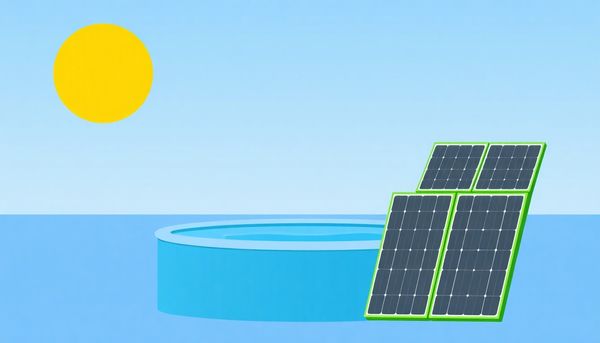
Choosing the perfect solar heater for your above-ground pool can feel like navigating a maze of options, each promising energy efficiency and warmth. When considering where you live, how long you swim, and how big your pool is, the SunHeater S220 stands out. Its modular design allows you to link multiple panels, tailoring the system to meet your specific heating needs. On sunny days, this system can significantly boost your pool temperature, extending your swim season into the cooler months.
For those with less space, the SolarPRO Curve Solar Pool Heater offers a clever solution. Its unique curved design doesn't just save space; it optimizes sun exposure throughout the day. I've seen it in action on a friend’s poolside, steadily increasing the water temperature by a few degrees over several days. It’s a reliable choice for those with smaller pools, particularly if you're working with constrained outdoor areas.
If budget is a primary concern, the Goplus Solar Dome offers a compact, effective option. Its lightweight, dome-shaped design facilitates easy installation and connection of multiple units. This option is particularly suited for pool owners who enjoy a DIY approach, as these domes can be effortlessly adjusted for optimal sun exposure, ensuring you get the most warmth even on cooler days. Each of these solar heaters brings its own strengths, tailored to a variety of pool needs and setups.
Selecting the perfect solar heater for your above ground pool involves more than just picking the most popular model. Each pool has its own personality, dictated by its size, location, and the local climate. Understanding these aspects can transform your pool-heating experience from a casual guesswork into a calculated investment.
First, consider the climate where you live. In sun-drenched regions, a solar heater can efficiently extend your swim season, harnessing sunshine to warm your pool water naturally. If your sunlit days are limited, you might need to pair your solar system with a backup heating method like a gas or electric heater.
Your pool’s size directly influences the number of solar panels needed. Larger pools demand more panels or higher-capacity systems to maintain a comfortable temperature. For smaller pools, compact options like the Goplus Solar Dome can be effective without overwhelming your space.
Ease of installation and maintenance also play a crucial role. Systems like the SunHeater S220, which connect seamlessly to existing filtration setups, offer simplicity and efficiency. However, if space constraints are a concern, consider dome heaters that fit snugly next to your pool.
Ultimately, the choice of a solar heater is about balancing your practical needs with the environmental benefits of solar energy. With the right system, you’ll not only enjoy a heated pool but also contribute to a greener planet.
Understanding how to harness the sun's energy can significantly enhance the efficiency of your solar pool heater. Begin by assessing the positioning of your solar panels, as this can make a crucial difference. Ideally, panels should face true south and be tilted at an angle equal to your latitude to capture maximum sunlight. This minor adjustment can lead to noticeable improvements in heating performance.
In addition to panel positioning, consider integrating a solar pool cover. This underrated tool works wonders by trapping heat and reducing evaporation, making your heating system more effective. I once tried this on my backyard pool, and the difference in warmth was remarkable, especially overnight when temperatures dipped.
Another tip is to regularly clean the panels. Dust and debris can accumulate over time, blocking sunlight and reducing efficiency. A quick rinse with a garden hose every so often can help maintain optimal performance. My neighbor, who relies heavily on solar heating, swears by this simple maintenance routine.
Furthermore, using a pool pump timer ensures water circulates through the panels during peak sunlight hours, maximizing heat absorption. This strategic circulation can raise the pool temperature significantly, extending the swimming season even in less sunny regions.
Lastly, regularly inspect your system for leaks or blockages, as these can hinder performance. By keeping a close eye and tweaking where necessary, you ensure that your solar heater operates at its peak, giving you a warm and inviting pool throughout the season.
Tinkering with solar solutions for heating your above-ground pool can be both an adventure and a savvy investment. If you've ever thought of channeling your inner engineer, embarking on a DIY solar heater project might be your next weekend endeavor. Not only does it promise relief from the sweltering summer sun, but it also offers the satisfaction of crafting a personalized, eco-friendly solution.
Consider the basics: your local weather, pool size, and available sunlight. Armed with these insights, you can plan a system tailored to your pool's needs. Materials like black irrigation tubing, a coil, and a simple wooden frame can form the backbone of a homemade solar heater. The concept is delightfully straightforward—pool water is circulated through the black tubing, absorbing the sun's warmth before returning to the pool.
A friend of mine recently rigged up a system using black PVC pipes laid out on his garage roof. While he initially faced skepticism from his family, the pool's gradual rise in temperature soon won them over. It’s crucial, however, to have a space that receives ample sunlight and to ensure the system is securely installed to withstand weather changes.
The beauty of such projects lies in their adaptability. You can adjust the setup, add more tubing, or even incorporate a solar cover to boost efficiency. While the upfront effort is significant, the reward of a warm dip without the high energy bills makes it all worthwhile. Whether you're an experienced DIYer or a curious beginner, exploring DIY solar solutions can be a fulfilling venture into sustainable living.
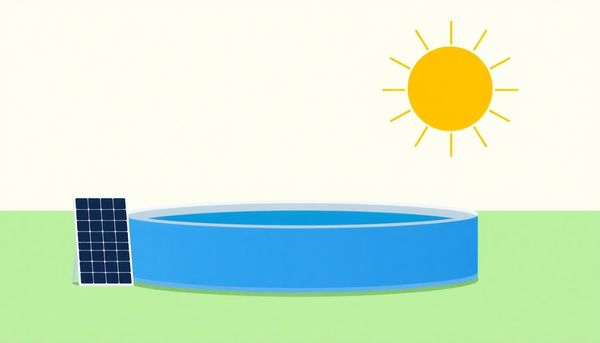
If enhancing your pool's warmth through eco-friendly means sounds appealing, solar heaters might be the right choice for you. Selecting an efficient solar pool heater is not just about purchasing the first model you see; it’s about understanding how best to harness the sun's energy for your specific needs. First, consider your geographic location. Those basking in constant sunshine can benefit enormously from solar power, but if your skies are often overcast, you might need additional units or an alternative heating method, like a gas or electric heater, for consistent warmth.
The SunHeater S220 is a stellar example of an adaptable system. It allows the connection of multiple panels, which means you can tailor the setup to fit your pool's size and specific heating requirements. Imagine a sunny morning where your pool water is slowly warming to a comfortable temperature without increasing your electricity bill. This system works seamlessly with your existing pool pump, and though it needs ample space to lay flat, its efficiency makes the setup effort worthwhile.
However, if space is limited, the SolarPRO Curve offers a compact and budget-friendly alternative. Its curved design optimizes heat absorption throughout the day while taking up minimal space. Plus, if you have a small backyard pool, the Goplus Solar Dome provides an affordable, easy-to-install option to boost water temperature without the need for complex setups or added energy costs. Each of these systems can be enhanced by using a solar pool cover, which helps retain heat during cooler nights. Balancing these options with your environmental conditions and pool size will ensure you maximize warmth efficiently, extending your swimming season with minimal fuss.
Navigating the world of solar pool heaters can feel like choosing the perfect puzzle piece—each option offers unique benefits, but not every one will fit seamlessly with your needs. Your local climate acts like the first brushstroke in this decision-making canvas. Sunny, mild regions will reap the most reward from solar heating systems, allowing you to extend swimming seasons without a steep energy bill. However, if your area is more familiar with overcast skies and chilly breezes, solar alone might not suffice; consider complementing it with a gas or electric heater.
Pool size and shape dictate the power needed from your solar setup. For instance, a sprawling 24-foot round pool might require a series of several solar panels like the SunHeater S220 to comfortably reach inviting temperatures. Conversely, smaller setups, such as the Goplus Solar Dome, are perfect for modest pools, offering a compact yet potent solution without taking over your backyard.
Space constraints present another crucial consideration. Flat solar panels demand room to lay out, often finding homes on rooftops or expansive decks. Dome models, with their efficient design and tilt-ready legs, adjust more readily to tight quarters, making them excellent choices for compact areas.
Remember, even the best solar heater relies on its environment to reach full potential. Factor in your home's sun exposure, pool placement, and whether seasonal dismantling is feasible. Each element contributes to crafting a comprehensive, effective heating solution tailored just for your pool.
Sunshine can transform your chilly above ground pool into a welcoming oasis if you know how to harness it properly. When installing solar panels for pool heating, strategic placement is key. Aim to position your solar panels where they will maximize exposure to sunlight, free from any obstructions like trees or tall buildings. This direct sun exposure is crucial, especially if your region enjoys abundant sunny days, as it optimizes the panels' ability to heat your pool efficiently.
Think of solar panels as a part of your pool’s ecosystem. They work tirelessly alongside your existing pool pump, drawing water through a network of tubes to absorb the sun's warmth before returning it to the pool. Therefore, it's essential to install the panels close to your pool to minimize resistance and energy loss during this circulation process. A flat, sun-drenched rooftop or a sturdy deck can serve as ideal spots for installation, assuming they can support the weight and have adequate space.
Consider your pool’s size and desired temperature increase when selecting the number of panels. For larger pools or climates with cooler temperatures, you might need to link multiple panels to achieve your desired warmth. If your pool is small, a single panel may suffice, keeping costs and installation time in check. Remember, though, that winterizing your setup by draining and storing components is crucial in colder months to prevent any damage.
Ultimately, an effective solar panel installation is about understanding your environment and tailoring the system to meet your pool's specific heating needs.
When discussing the merits of solar heaters for above-ground pools, it's essential to acknowledge the unsung hero: the pool cover. Unlike their more glamorous counterparts, these covers work quietly, enhancing your pool’s warmth and extending your swimming season. During a get-together at a friend’s backyard, I noticed how much warmer their pool felt compared to mine. The secret wasn’t just in the sun-absorbing panels; it was their snug pool cover, diligently trapping the day's heat and minimizing nighttime heat loss.
Pool covers operate on a simple yet effective principle. By creating a barrier between the water's surface and the air, they significantly reduce evaporation—a primary source of heat loss. On a windy day, a covered pool can maintain its temperature while an uncovered pool might lose several degrees overnight. It's much like wrapping yourself in a cozy blanket on a chilly evening; the warmth stays with you.
Moreover, pool covers complement solar heating systems beautifully. While your solar heater works during daylight, capturing and transferring solar energy into the pool, the cover ensures that hard-earned warmth doesn’t escape once the sun sets. It’s a dynamic duo: the heater powers up the heat, and the cover seals it in. In fact, using both can raise the water temperature by up to 15°F compared to an uncovered pool, allowing for an earlier start and a longer finish to the swim season. Investing in a quality pool cover is a small step that yields substantial comfort and efficiency gains.
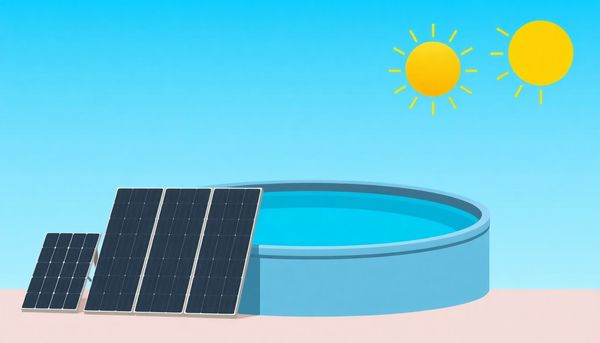
Opting for eco-friendly pool heating isn't just a trend—it's a sustainable choice that benefits both your wallet and the environment. In a world increasingly conscious of energy usage, solar heaters for above ground pools offer an appealing alternative to traditional gas or electric systems. Unlike their conventional counterparts, solar heaters harness the sun's free and abundant energy, reducing your carbon footprint while keeping your pool water at a comfortable temperature.
Consider the climate you live in. For those in sun-drenched locales, solar pool heaters are a no-brainer, efficiently extending your swimming season without incurring high energy costs. I remember visiting a friend in Southern California who had installed a solar heater on his above ground pool. The simplicity of the setup amazed me: a few solar panels perched on the garage roof, quietly warming his pool without any ongoing expense. This setup not only provided consistent warmth but also slashed his energy bill—a win-win situation.
Yet, it's crucial to recognize that solar heating is most effective in regions with ample sunshine and mild winters. If you reside in a cooler area, and desire quick heating, combining solar with an auxiliary heating method might be necessary. But for those committed to a greener lifestyle, solar pool heaters stand as a testament to how sustainability can seamlessly blend with everyday comfort.
Selecting the perfect solar heater for your above-ground pool can feel like a puzzle with many pieces. You might find yourself eyeing the weather forecast, wondering if those sunny days are enough to keep your pool comfortably warm. Where you live is a major player in this decision. A friend once shared how her solar heater worked wonders in sunny Southern California, extending her swimming season well into fall. In contrast, another acquaintance in the northern states found it challenging to achieve the warmth desired without supplementary heating options.
Pool size is another crucial factor. A larger pool demands more power, meaning more panels or a more robust system. The SunHeater S220, for instance, offers flexibility with its ability to connect multiple panels, making it suitable for expansive water bodies. Smaller pools, on the other hand, might find the compact yet effective GAME 72000-BB SolarPRO fits the bill perfectly.
Then, there’s the matter of installation. Location and available space dictate whether a ground-level setup or a rooftop installation is feasible. While a simple solar dome might seem ideal due to its compactness and ease of installation, make sure it’s positioned where it can soak up maximum sunshine.
Lastly, your wallet has a voice in this conversation. Solar heating is typically more wallet-friendly in the long run, but initial costs can vary. Investing wisely means balancing upfront costs with the system’s efficiency and your local climate’s demands.
You’re standing by your pool, ready to take a plunge, but the water is still too chilly for comfort. To make the most of your solar heater and ensure your pool stays invitingly warm, a smart installation strategy is key. First, consider the orientation and location of your solar panels. Place them in an area that receives maximum sunlight throughout the day—preferably facing south in the northern hemisphere.
Next, take advantage of your existing pool pump system. Utilizing the pump's power ensures constant water circulation, helping your solar panels efficiently warm every drop. This might mean situating your solar heater close to the pump to reduce travel distance and energy loss. If your space allows, consider elevating the panels on a sloped roof or rack to maximize sun exposure.
On a personal note, I set up my solar heater on a southwest-facing fence in the yard, which transformed my pool from a rarely-used feature to a neighborhood favorite. Adding a solar pool cover can further boost efficiency by trapping heat overnight, preventing the water from cooling too quickly.
Remember, each pool setup is unique. Tailor the installation to your specific environment and pool size for optimal results. By paying attention to these details, you can extend your swim season comfortably and enjoy the benefits of solar energy without the burden of high utility bills.
To truly amplify the efficiency of your solar pool heater, a few thoughtful strategies can make a world of difference. One of the simplest, yet most effective methods is integrating a solar pool cover. This not only traps the heat absorbed during the day but also significantly reduces overnight heat loss, ensuring your pool stays warm and inviting for longer. Think of it like wrapping a cozy blanket around your pool when the sun goes down.
Beyond covers, positioning is key. Solar panels should be placed where they encounter maximum sunlight, ideally facing south and tilted at an angle equal to your latitude. This orientation captures the most solar energy throughout the day, optimizing the heating process. If roof space is limited, consider installing panels on a ground rack, ensuring they're free from shade cast by trees or structures.
Moreover, regular maintenance of both your solar system and pool is crucial. Clean panels free from debris can absorb sunlight more effectively, while a well-maintained filtration system ensures water moves efficiently through the collectors. Personally, I’ve seen how a simple habit of monthly checks can prolong the life of a heater and enhance its performance significantly.
Finally, remember that while solar heaters are an eco-friendly choice, they work best in tandem with other heat retention techniques, especially if you live in a cooler climate. By optimizing each aspect of your solar heating setup, you’ll make every swim just that much more enjoyable.
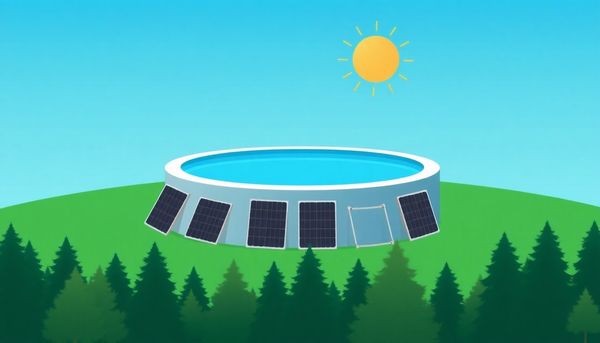
Ever thought about harnessing the sun's power to warm your pool without breaking the bank? Crafting your own solar heater can be an affordable and effective solution. This project doesn’t just save money; it also offers an engaging way to understand solar energy’s practical benefits.
Begin by sourcing affordable materials, such as black polyethylene tubing, which can be found at most hardware stores. The black color is crucial as it absorbs heat efficiently. You'll need about 100 feet of this tubing, a piece of plywood, zip ties, and a couple of connectors to integrate with your pool's existing pump system.
First, coil the tubing onto the plywood, securing it with zip ties to ensure it doesn’t unravel. Position the plywood in a sunny spot—rooftops or nearby sheds work well because they maximize sun exposure. Connect one end of the tubing to your pool's pump outlet and the other to a return inlet. As water circulates through the tubing, the sun heats it, and voilà, warm water returns to your pool.
Not only does this DIY solar heater extend your swim season, but it also reflects a commitment to eco-friendly practices. Chatting with a neighbor who installed a similar system, they reported enjoying a consistent 5-degree increase in water temperature without additional energy costs. Transforming sunlight into warmth is both a rewarding and sustainable venture for any pool owner.
Choosing the right solar system for your above-ground pool can feel a bit like finding a needle in a haystack, but it’s all about aligning with your pool’s specific needs. First, think about how much sun your backyard receives. A solar heater thrives on abundant sunlight, so if your pool area basks in sunshine for most of the day, you’re on the right track. In sunnier climates, a system like the SunHeater S220 can be particularly effective. Its customizable panel setup allows you to scale the heating power to match the size of your pool.
Consider the size of your pool next. Larger pools demand more extensive solar paneling to raise the water temperature effectively. However, for smaller setups, a compact solution like the SolarPRO Curve might be ideal. Its clever design maximizes solar absorption without taking up too much space, perfect for those with limited room.
Budget is another critical factor. While the initial investment in solar systems can be substantial, the long-term savings on electricity bills make them worthwhile. The Goplus Solar Dome offers a cost-effective option for those starting small or with budget constraints.
Finally, remember the climate. In areas with cooler temperatures or shorter swim seasons, you might need to look into hybrid solutions, combining solar with electric or gas heaters for those chilly, sunless days. Balancing these elements ensures you don’t just choose a solar system but the right one for your pool and lifestyle.
When it comes to squeezing every last ounce of warmth from your solar heater, a few savvy strategies can make all the difference. Start by optimizing the placement of your solar panels. Ideally, they should be positioned in full sun, angled at an incline that matches your latitude to capture the maximum solar energy throughout the day. Imagine panels basking in the sun like sunflowers following the light—this is the kind of efficiency you’re aiming for.
Next, consider your timing. Running your pool pump during peak sunlight hours ensures that the water is heated while the panels are at their most productive. It’s like baking cookies at just the right temperature; timing is everything! Moreover, integrating a solar cover can significantly enhance your heater’s performance. By trapping the warmth, it prevents heat loss during cooler nights, much like wrapping a cozy blanket around your pool.
Maintenance is another key aspect. Regularly check your system for any blockages or leaks. A clear pathway for water flow ensures that your solar heater operates at its best, akin to ensuring your coffee machine isn’t clogged for that perfect brew. Finally, don’t forget about seasonal adjustments. In colder months, draining and storing your panels can protect them from freeze damage, ensuring they’re ready to heat up your pool again come spring. These simple steps can transform your solar setup from good to exceptional, making your pool the envy of every neighbor.
Embarking on the journey of installing your own DIY solar heater can be both rewarding and practical, especially when considering the benefits of utilizing natural energy to extend your pool season. To start, identify a strategic location for your solar panels where sunlight is abundant—for most people, this is often a flat section of the roof or a sunny spot in the yard. Ensuring the panels have a direct line to the sun throughout the day is crucial for maximizing efficiency.
Gather the necessary tools: a drill, screwdriver, and some basic plumbing fittings will usually suffice. Begin by connecting the solar panels to your pool’s existing filtration system. The panels should be installed in a series, allowing water to flow through and absorb heat before returning to your pool. It's important to secure all connections tightly to prevent leaks and ensure smooth water circulation.
Consider the layout and positioning of the panels. Panels should be slightly tilted toward the sun, typically at an angle that matches your latitude, to optimize heat absorption. You might find it helpful to recruit a friend for the installation, as maneuvering the panels into place can be cumbersome alone.
Finally, monitor the setup over the next few days to ensure everything functions smoothly. Adjust as necessary, and don’t forget to regularly check for any signs of wear or leaks. By the end of this project, not only will you enjoy a warmer pool, but you’ll also have the satisfaction of having harnessed the sun’s energy all on your own.
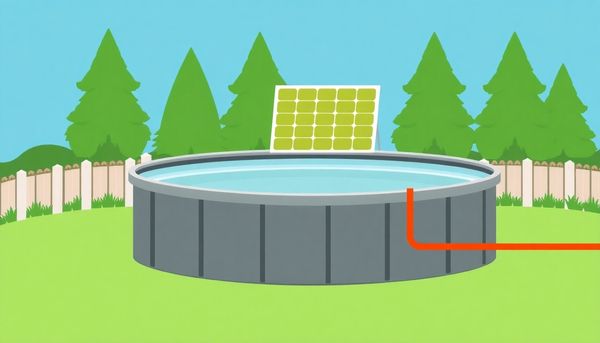
The warmth of summer days often fades too quickly for pool enthusiasts eager to enjoy their above-ground oasis a little longer. The secret to squeezing out extra weeks of swimming? A solar pool heater. Imagine stepping into invitingly warm water, even when the trees start to turn golden. Solar heaters tap into the abundant, free energy of the sun, extending your swim season without draining your wallet.
Take, for instance, the SunHeater S220, a favorite among pool owners for its adaptability. It allows you to connect multiple panels, customizing the heat output to suit your needs. The ease of installation is a bonus, as it uses your existing pump system. On the other hand, for those with limited space, the compact Goplus Solar Dome offers a different approach. This dome-shaped heater efficiently collects solar energy with minimal footprint, perfect for smaller pool setups.
However, the effectiveness of any solar heater largely depends on location and sunlight availability. In sunny regions, these systems can significantly raise water temperatures, making chilly dips a thing of the past. But if you're living in a cooler climate, you might need to consider a combination of solar with traditional heating methods for optimal comfort.
By embracing solar technology, you not only extend swimming pleasure but also contribute to an eco-friendlier environment—one sunny splash at a time.
Deciding on the perfect solar heater for your above-ground pool can be a bit like choosing the right companion for a long journey. Each option comes with distinct features and benefits, suited to different needs and environments. Begin by considering your local climate: if you're basking under abundant sunshine, a solar heater could be your pool's best friend. However, in cooler or cloudier regions, you might find yourself needing additional backup from electric or gas heaters.
Think about the swim season you envision. If you enjoy early morning swims or late-night dips in spring and fall, a robust system like the SunHeater S220 might extend your pool time by weeks. Its ability to connect multiple panels allows for customizable power tailored to larger pools or those needing a temperature boost. For smaller pools or tighter budgets, simpler solutions like the GAME 72000-BB SolarPRO or Goplus Solar Dome offer practical and economical warmth.
Don’t overlook installation nuances. The SolarPRO’s curve design and adjustable legs make it adaptable to various setups, while the SunHeater’s flat panels need spacious, sunlit areas. Lastly, assess your pool's size and shape. Larger pools demand more panel power, and if your pool nestles in the shade, ensure your chosen system can compensate. With the right solar heater, you’ll transform your pool into a cozy oasis, keeping those water chills at bay.
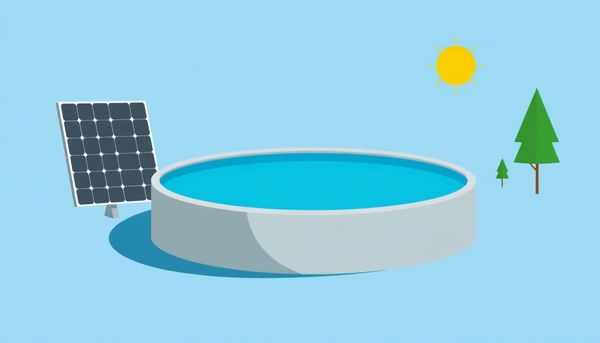
This article provided insights into maintaining your pool. Start your pool care journey today!
Want to become a pool maintenance expert? Our free Pool School course covers everything you need to know about pool care. From basic maintenance to advanced troubleshooting, you'll learn how to:
Join over 10,000 pool owners who have already transformed their pool care routine. Get started with our free Pool School course today!